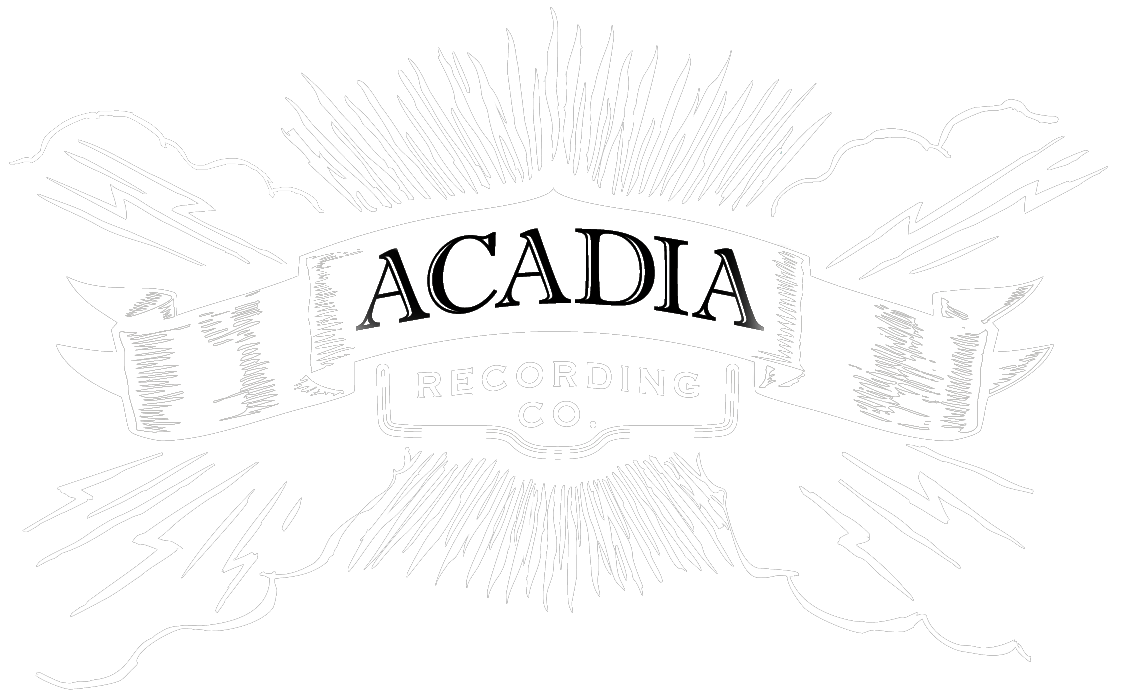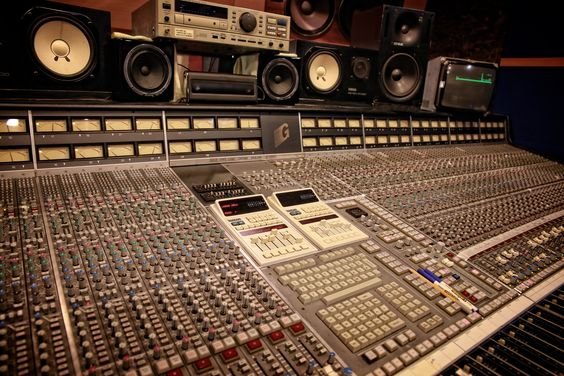Acadia’s New SSL Origin Console
Solid State Logic. With the introduction of the classic SSL 4000 E series console in 1979, SSL became THE sound of modern mixing. An overwhelming percentage of the greatest hits of the 80’s, 90’s and beyond were mixed on an SSL console. Engineers of the day discovered that after tracking through a Neve or similar console to take advantage of all the beautiful color and vibe they imparted, mixing those same tracks on an SSL would cut through the mud and give the tracks a tight, punchy and cohesive sound along with remarkable depth and stereo imaging. These legendary mixing desks earned the moniker - “the great clarifier”.
The classic SSL 4000 G series console
Acadia engineer Jason Phelps recalls - “As a young musician and aspiring gear-head, I clearly remember seeing an ad for the then newly released SSL 4000G series console. It was an awe-inspiring thing of beauty, impossibly far out of reach. From that moment it was my dream to even just be in the room with such a machine, nevermind to OWN one. However, a seed was planted and little did I know that 35 years later, that dream would actually become a reality!”
A lot has changed in the recording world since those days - with the advent of digital technology and Protools replacing tape machines around the world, large format analog consoles were no longer considered essential equipment to make great sounding records. With the advent of high quality plugin emulations of analog gear and a variety of analog summing solutions, engineers were finally able to make records that rivalled the sound of the traditional console.
Many mixers held on to their SSLs - despite the significant downsides: They required huge amounts of electricity to run plus whopping AC bills to keep them cool, the whole system was run on a floppy-disc based ancient computer, they required constant maintenance etc. But the sound was still there, and for many it was worth the cost and hassle.
Our Road to the Origin
Here at Acadia, we used a modern hybrid approach. Our console, originally a crappy sounding Soundcraft, followed by a better sounding Toft ATB24 was employed primarily to provide some eq on the way into Protools and for latency free cue mixes. To help overcome the old consoles’ limitations, we amassed an impressive selection of 47 channels of external preamps. This in conjunction with a Dangerous Audio 2-BUS LT analog summing unit (and 32 channels of pristine Lynx Aurora(n) A/D conversion) we were able to achieve excellent results.
As our recording techniques became more sophisticated we were regularly running up against the limitations of our 24 input console, requiring all manner of tricks and workarounds as track counts got higher. We dreamed of buying a used SSL but the cost and realities of the maintenance required (Portland is a long way from the nearest SSL service tech!) it just didn’t make sense. Buying a new SSL was also highly cost-prohibitive: the SSL AWS 48 was almost $100k and still wouldn’t exactly meet our needs, and the flagship SSL Duality Fusion lists for over $250,000!
Enter the ORIGIN 32
When the 2019 AES show came around, the big news was that Solid State Logic was going back to its roots with the release of the SSL ORIGIN all-analog console. Modeled after the classic 4000 E series desks, these new 32 channel consoles were designed to fit into a modern workflow, with MANY improvements from the original consoles. Using all modern, low power consumption components, the Origin was cheaper to build, ran cooler and introduced many new features. As a dual in-line console, it allowed for 64 channels at mixdown (!), featuring the classic E Series “Black Knob” EQ (located closer to the faders for much improved ergonomics), programmable bus routing which eliminates literally hundreds of switches and the center section holds the classic “G-COMP” VCA Bus compressor. Priced at under $60,000, the Origin seemed a little less like a dream and became a potential reality. Two key features of the classic consoles were missing however: no more dynamics (compressor/expander/gate) on every channel, which shaved about $30k off the price tag (we have a ton of outboard compressors so not an issue for us) and also no “automation,” where fader moves can be recorded into the SSL’s internal computer and then “replayed” by servo motors physically moving the faders to repeat/update previously “saved” mixes. Protools allows for elaborate automation features, but it’s not exactly the same as physically moving the fader and “performing” the mix in real time. We would later learn there are some very elegant solutions to the latter problem.
Opportunity Knocks
We kept an eye on the various internet sites that list consoles for sale and in July of 2023, we got an email alert that there was a new Origin 32 for sale - it was located in Miami and the listed price was very reasonable and it included an SSL UF-8 DAW control surface and a few grand worth of DB25 cables. It actually seemed too good to be true so we did some internet sleuthing and in fact the seller WAS a legitimate SSL dealer with a website, a physical storefront and 837-five star transactions to his credit. I found a phone number and spoke with Josh, and he shared the story of the console with me. He had ordered it for a not-for-profit music school opening in North Carolina but they never got the funding they required and never actually opened their doors. So Josh was forced to drive to N.C. with a U-Haul to repossess the board, which had never been used and store it in his retail shop. After a short bit of haggling, we settled on a price and it looked like we were about to own an SSL!
The Struggle Is Real
Several hurdles stood in the way of completing this transaction. We first saw the ad on a Thursday morning - the fourth day of a week-long session. Trying to communicate while in the middle of a session was a bit challenging but my trusty assistant Will was able to help keep the session going while I made several frantic phone calls and emails to make the final decision to pull the trigger. A major issue was transporting the console. Renting a one-way truck from Miami to drive it back was over $3000 before fuel, lodging and flights to Miami - it all seemed like a bit much. We considered using U-Ship online and hiring a contractor to move it but it just seemed to be too delicate an item to trust to a random person. Josh informed us that he had had one other buyer previously interested who was located in NYC. It just so happened that Josh was about to go on vacation to visit family near the NY/NJ border. He discovered that if he removed the five large power supplies with their heatsinks, the console would JUST BARELY fit into the rear hatch of his wife’s Volvo X/C 90! He made the offer to drive the console up to NY for a very reasonable price, but he was going to be there on Monday - four days away! We sent Josh $12,000 via Venmo as a down payment and it was game on.
We needed to accomplish several tasks to make this all happen. 1) Get a cashier’s check for the balance of the price, which we were able to secure just in time (again all this is happening while a session is going on!) 2) Jason’s personal vehicle had a tow bar installed but didn’t have an actual ball hitch (Todd said he had one we could use) or a wiring harness kit for trailer lights etc. It turned out that U-Haul had no wiring harness kits in stock anywhere in the state. We called the Toyota dealership and they said they could have one shipped up from Boston and it would be there by noon on Saturday. 3) We called a U-Haul location near the meeting point in NY to reserve a 5’x8’ trailer rental.
Josh left Miami on Saturday morning - he had the console loaded and he was planning to go halfway that day and the rest on Sunday, we were to meet him around noon on Monday to make the pickup. When we went to the dealership on Saturday, they had sent the wrong wiring harness. Leaving there disgusted, we got a flat tire shortly thereafter. A call to AAA to mount the spare and a trip to Town Fair Tire and we were back on the hunt after a few more hours lost. We finally found a harness at an auto parts store and Alice and Jason installed it successfully. Whew! Looking at U-Haul’s website they listed a minimum ball hitch height. We installed the trailer hitch Todd had left us and it was nowhere near the proper height! It was now Sunday evening and we were supposed to leave at 6am, and we were feeling truly defeated - luckily Wal-Mart had ONE adjustable hitch left and we were finally in business!
The Move
We had a solid crew for the move - dear friend and luthier extraordinaire Scott Conley drove down to join Alice and Jason for the journey as we needed a minimum of three people to help Josh move the console and Todd was busy running a session that day. After the requisite stop at Rein’s Deli, we soon arrived at the U-Haul where we picked up the trailer. Soon we arrived at the address Josh had provided. Sure enough - there is was. Our SSL ORIGIN - in the back of a Volvo!
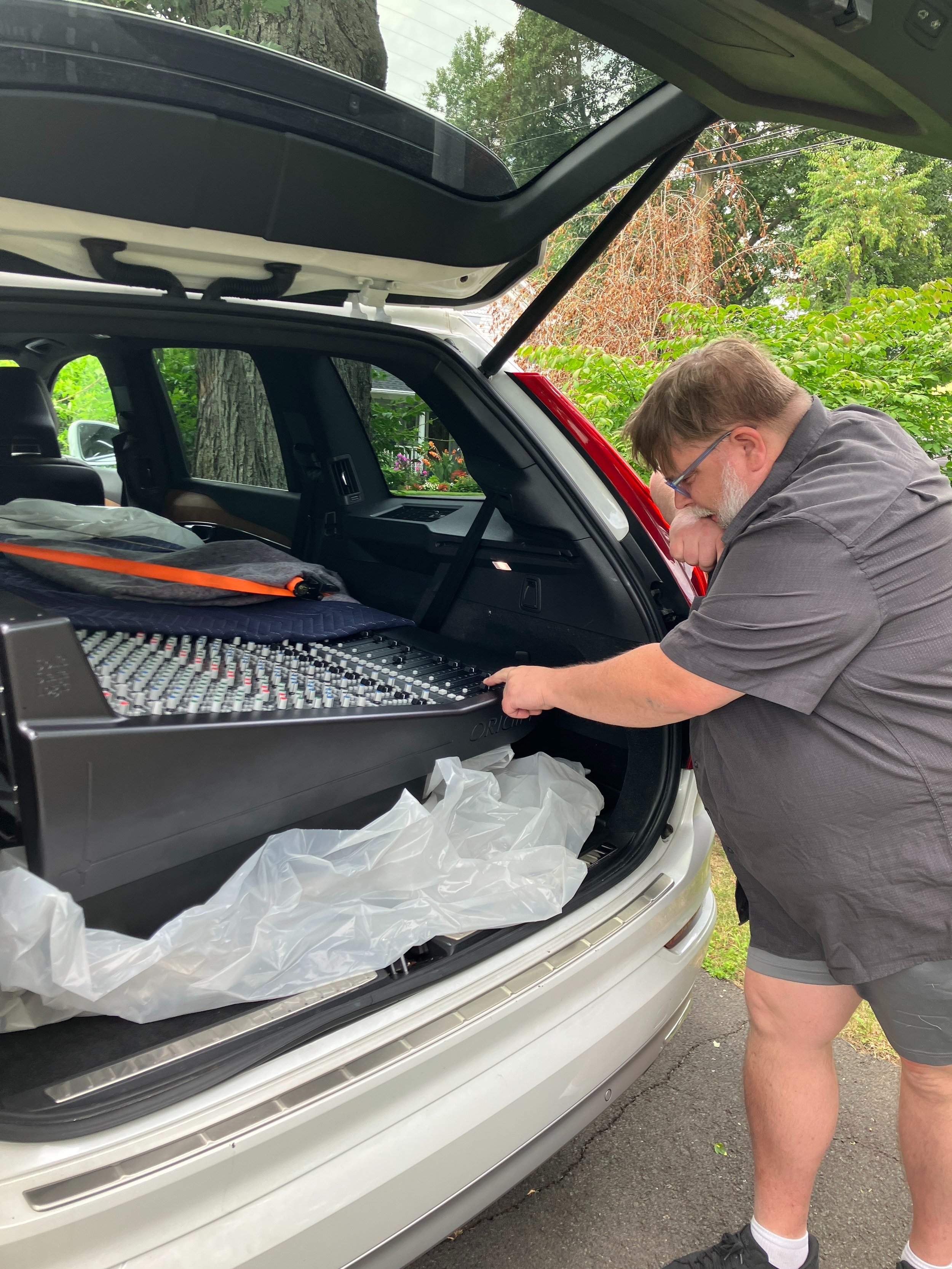
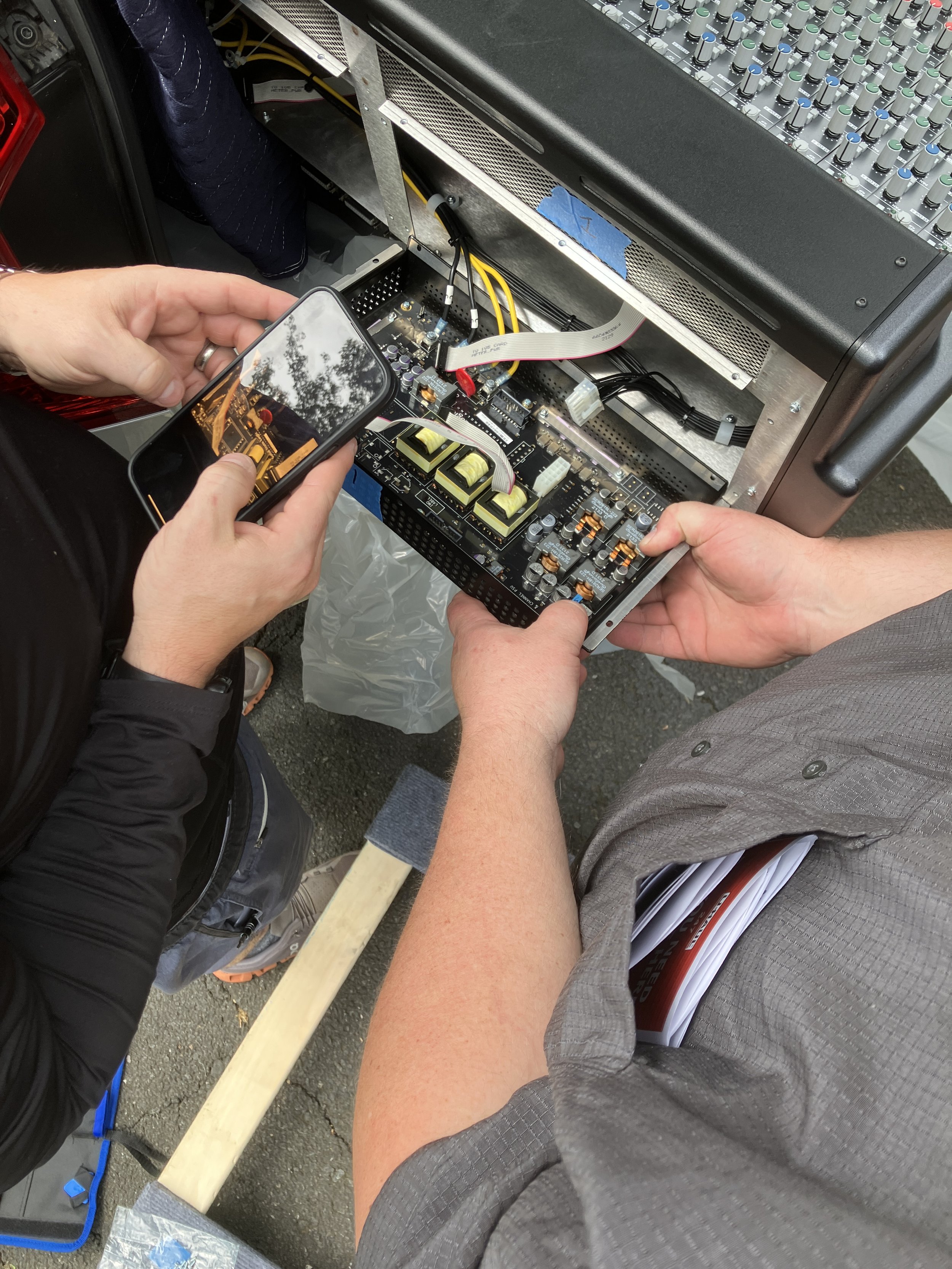

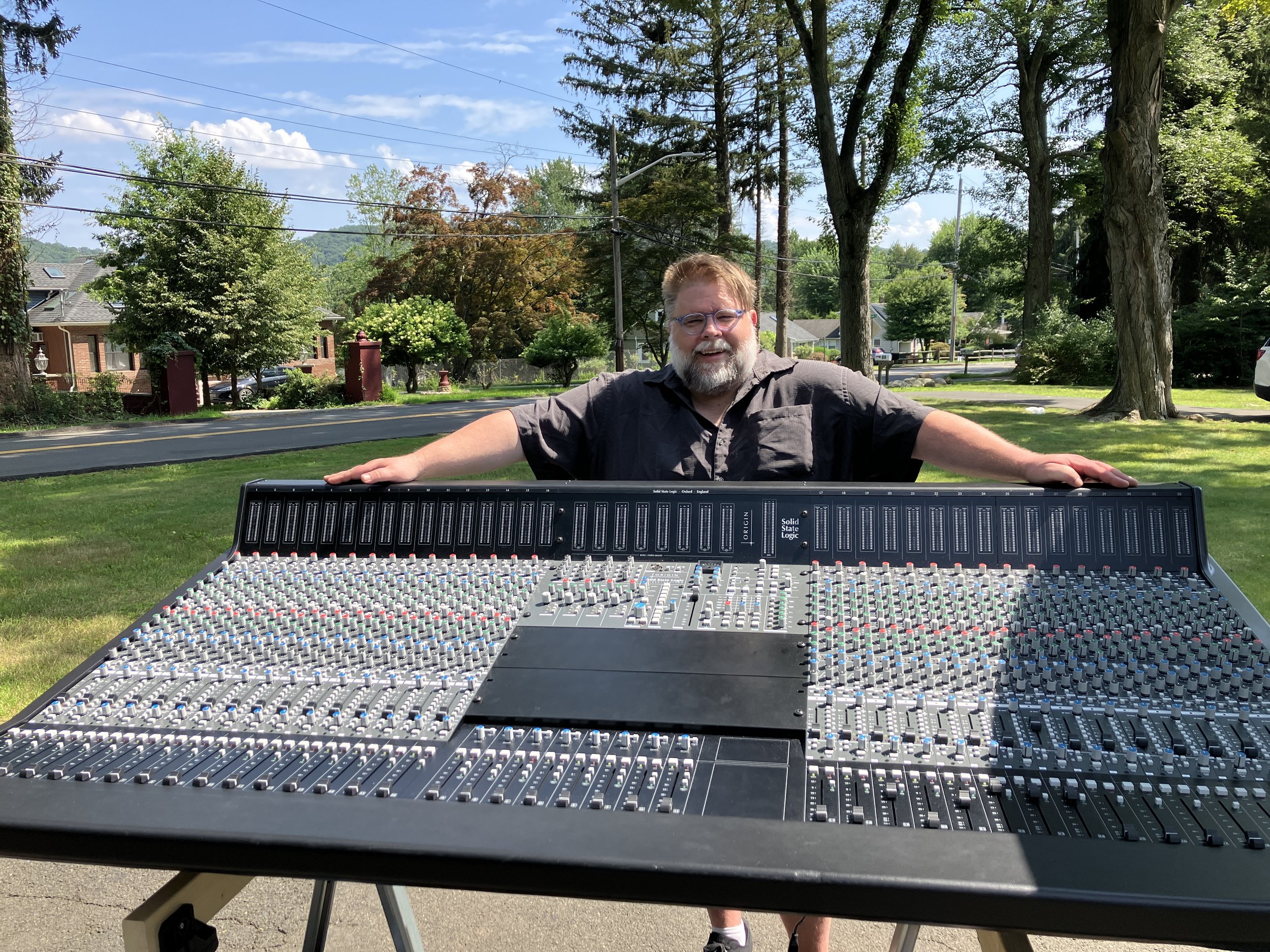
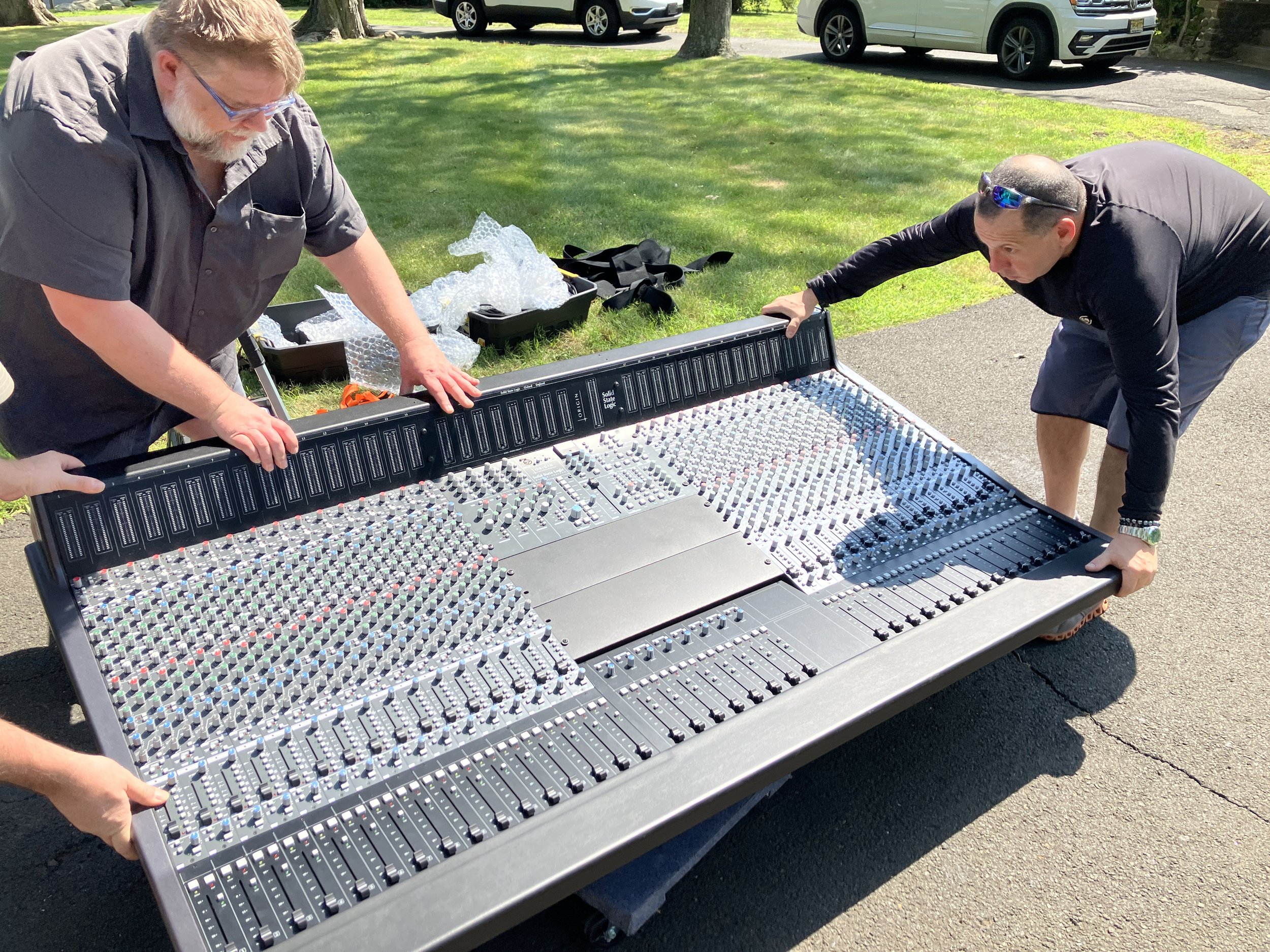
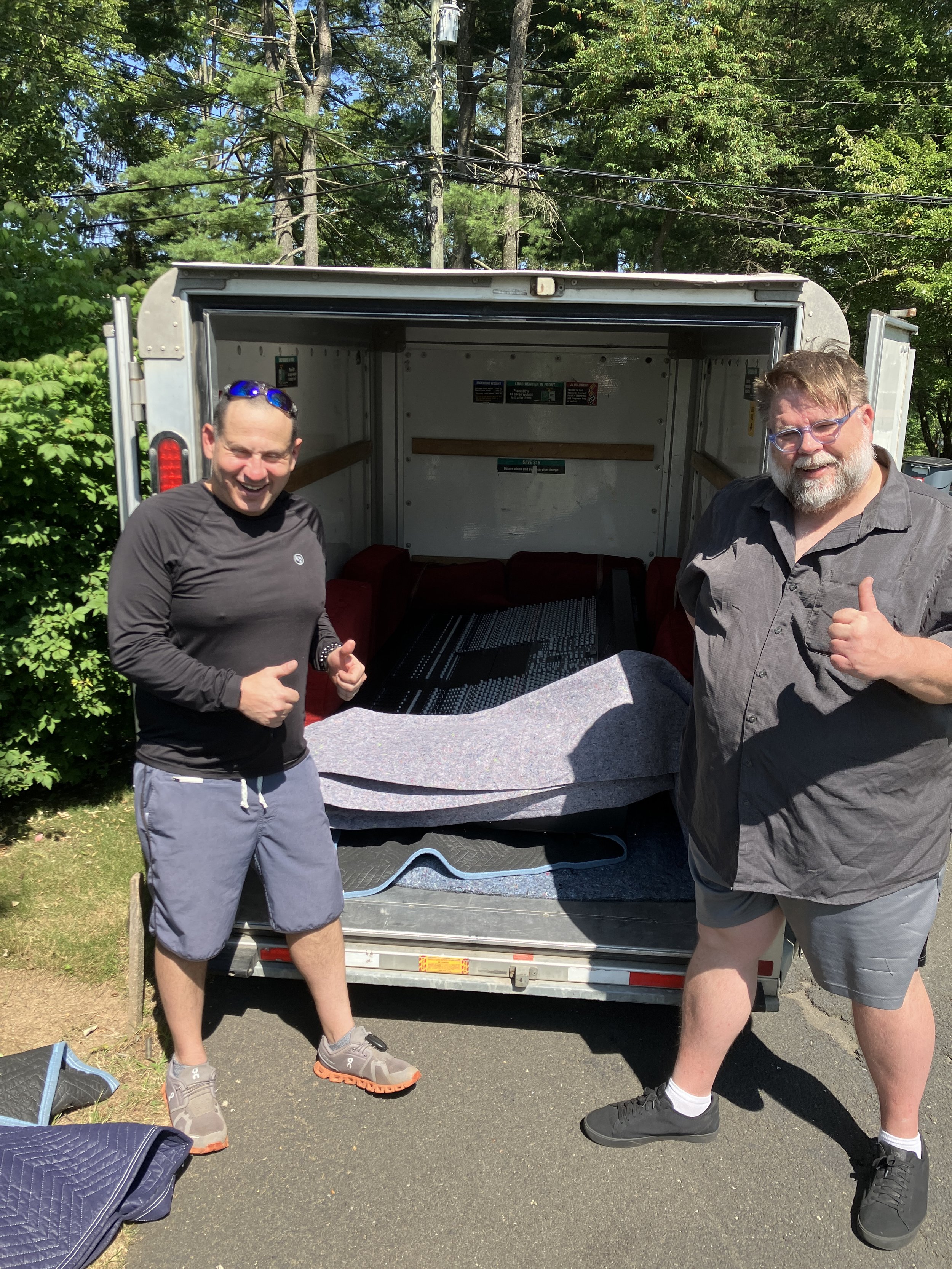
Josh could not have have been a nicer guy which gave us a great feeling about the whole transaction. He came prepared with a piano dolly, a set of sawhorses so he could reattach the power supplies in the driveway etc. We lifted the console from the back of the car and it wasn’t TOO heavy - we set it up on the sawhorses and began attaching the 50+ screws required. We plugged it into an AC outlet and sure enough she fired up and we saw the Origin’s exciting startup display routine for the first time.
It was impossible to contain our excitement and Josh was genuinely excited for us. We loaded the console into the trailer and surrounded it with couch cushions and packing blankets plus some ratchet straps to keep it from moving around and after saying goodbye to Josh, we loaded up in the car and hit the road.
Home Sweet Home
Jason was a nervous wreck driving home, just imagining the horrible possibilities but we arrived back at the studio unscathed. Moving the console into the studio was more challenging, we had to carry it on its side to make it through the doorway which complicated the issue. Soon it was safely resting in our studio lounge. The Origin had come home, but little did we know this was just the beginning. Stay tuned for the story of the install!
